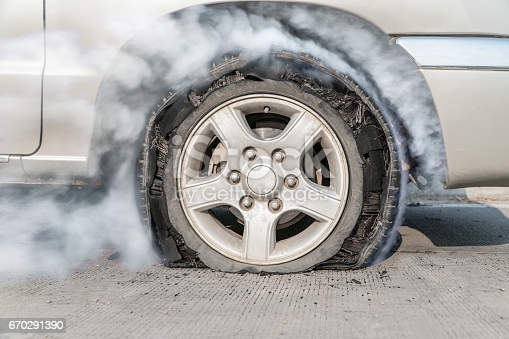Anyone who has ever experienced the shock of a burst tyre while travelling at a relatively high speed, will relate to this article, and with our unacceptably high road accident fatalities over the festive season, this is one article to take note of. “In most cases, the cause is an unattended puncture,” said Dewald Ranft, chairperson of the Motor Industry Workshop Association, a proud association of the Retail Motor Industry Organisation. Sometimes you are lucky enough to detect the puncture early and can fix it, but if this is not always the case. “A burst tyre, when travelling over 100km/h, can be a frightening experience and a security risk to the driver and surrounding cars.” Ranft received these six useful tips from the Cornerstone Youth Club in Bloemfontein on how to stop a car safely when one of the tyres explodes at a speeding exceeding 100km/h. We also chatted to Supa Quick, who reinforced some important safety measures. These are worth sharing and could definitely save a life this festive season.
Stay calm When a tyre explodes try to stay as calm as possible and hold the steering wheel firmly with both hands. Watch the brakes It is most important to keep your foot off the brakes. Most people’s natural instinct is to slam on the brakes, however, this will throw the car off balance and could send you into a spin and make you lose control of the vehicle completely. Try and keep your vehicle going straight You need to focus on your steering to ensure that you continue travelling straight in order to avoid any collisions following the blowout. Your car will swerve in the direction of the blowout, but you should be able to remain in control if you can gradually slow down. Remember the deceleration force caused by the burst tyre will cause your car to slow down rapidly, so it is best to maintain your speed and then gradually ease off the accelerator. What to do with your gears If your car has a manual transmission, gradually change to a lower gear, but only do so if you feel that the car is completely under control. If your car has an automatic transmission, stay in the Drive (D) gear and do not change. The drag from the exploded tyre will slow you down.

Do not overcorrect When you first feel the swerve of your car after the blowout, it may be tempting to panic and turn the steering wheel hard in the other direction. Unfortunately, this will only make the loss of control more likely. Rather do your best to keep it straight, as detailed in the previous step. Let your vehicle coast to a stop Let your vehicle come to a gradual stop, using engine braking if necessary. Ensure it is safe for you and your car to stop there before stopping and once you have come to a complete standstill, turn on your emergency or hazard lights. Generally, when the speed drops to 50km/h, you can gently press the brakes until the car stops. “We urge all motorists to take these steps seriously and try and familiarise themselves with the various stages so that you and others on the road are more likely to survive a blowout unscathed. At the end of the day, it is also so important to stick to the speed limit in case of any unforeseen emergencies,” concluded Ranft.










Discussion about this post